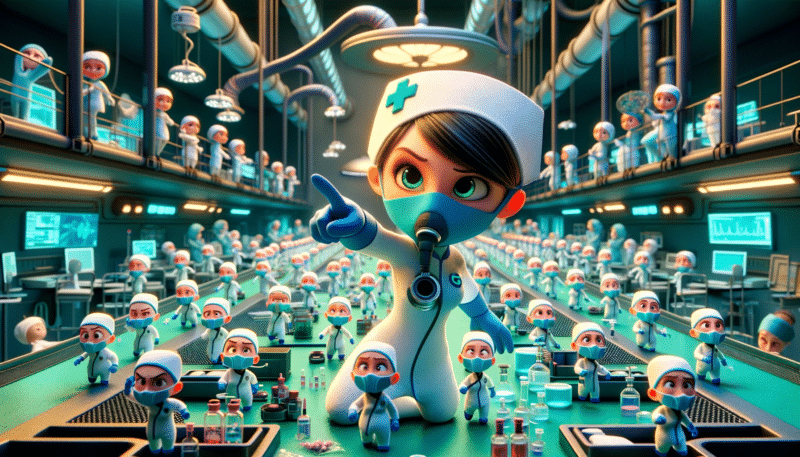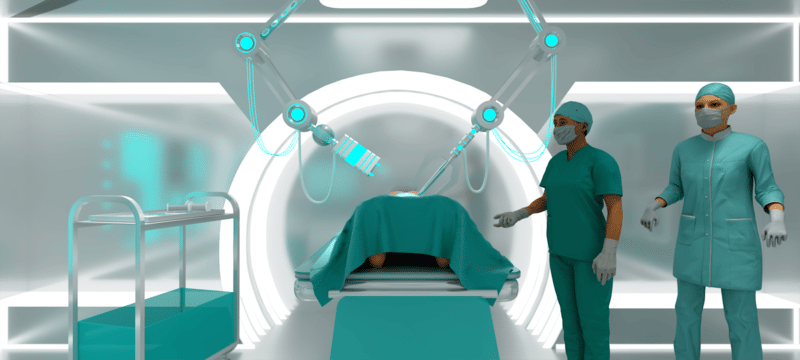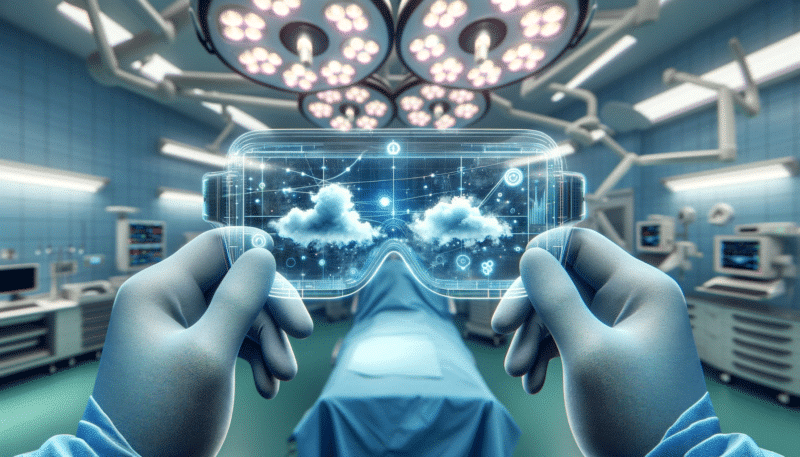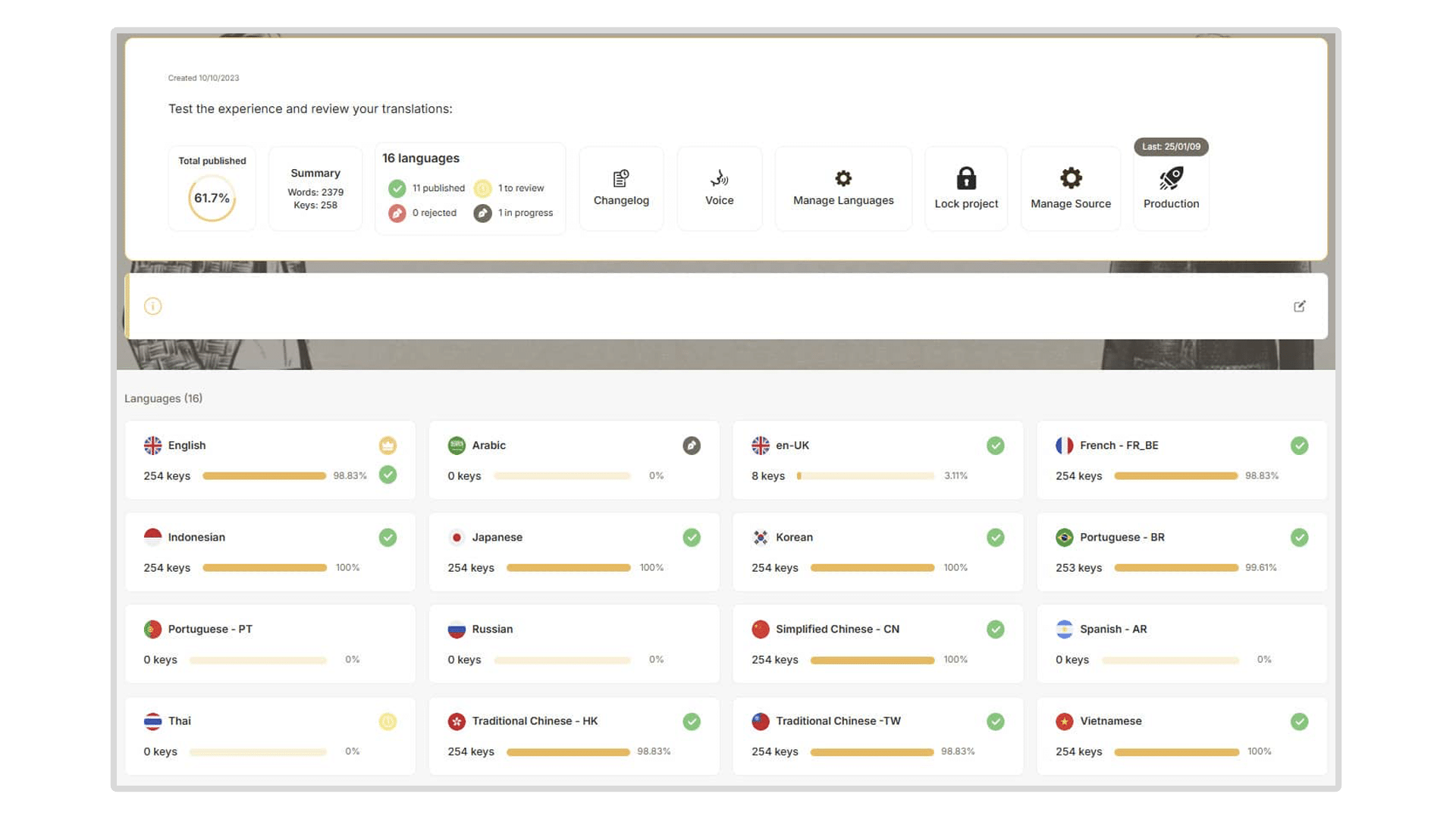
Technology for Medical Training: Immersive Experience and Enhanced Engagement

Medical training is usually long, intensive and demanding, requiring continuous commitment and a meticulous attention. Learners can quickly find themselves overwhelmed by the sheer volume of information. Serious games are an excellent way of streamlining and simplifying such training. Discover the benefits of serious games in the medical training.
Is gamification an effective tool for Medical Training?
The medical field is complex and not to be taken lightly. So it’s vital to think of ways to make training simpler without losing quality. Here’s how gamification can help you improve your training.
Role-playing scenarios that come close to real life
Thanks to gamification, you can add a real-life dimension to your medical training by integrating immersive, realistic scenarios to reinforce learning. Through interactive scenarios, learners are confronted with complex virtual clinical cases, faithfully reproducing real-life medical practice situations. Medical procedure simulations offer a hands-on experience where healthcare professionals can practice surgical procedures or examination techniques, all in the safety of a virtual environment. Using interactive games, serious games enable learners to make clinical decisions, establish diagnoses and manage treatments, reinforcing their reasoning and decision-making skills. Finally, these digital environments provide immersive learning spaces where they can navigate and interact with a variety of medical contexts, such as operating theatres or emergency situations, for a close-to-reality experience without risk exposed to patients.
Increased engagement and retention
With all game mechanics implemented, gamification boosts players’ experience through immersion. This versatile approach, combining leaderboards, quizzes, missions, point rewards, and the excitement generated by interactions via game mechanics, not only transforms the player experience, but also fosters deeper involvement. By skillfully fusing these mechanics, gamification becomes a key to increasing engagement, holding attention and stimulating ongoing user participation in a variety of contexts, whether learning, collaborative work, or other interactive activities.

Explore countless design possibilities with new technologies
Gamification gives you infinite freedom. 2D for versatility and 3D style for realism and immersion, metaverse for socialization and interaction and AI for optimization and automation, you’re free to explore any technology you like to create immersive, interactive learning environments. This innovative combination of training and gamification paves the way for teaching methods that are more effective, more dynamic and better adapted to the specific needs of medical training, improving knowledge retention and competence among healthcare professionals.
Reduce training time
Gamification offers the flexibility needed to reduce both the cost and duration of training courses. By adapting to the availability and level of each learner, it eliminates the constraints of rigid schedules and simplifies processes, removing traditional obstacles such as scheduling problems and time-consuming details. This individualized approach allows each learner to progress at his or her own pace, enabling better time management and optimization of resources, making training more effective and accessible to all.
AORN case study
Here is a successful example of gamified medical training: AORN
The collaboration between AORN and Emeraude Escape to create a serious game was a success and a breakthrough for the training of perioperative nurses. This innovative training course transported learners into a fictional future where they had to navigate through three modules to escape critical situations. Each scenario corresponded to specific practices, from preventing unintentional VACs to recovering device fragments. The main objective of this training was to keep learners engaged, especially in the medical training, which is complex and dense at the same time.
The strengths of this serious game are the increased engagement, active participation, enhanced interactivity, personalized learning and a more captivating and comprehensive experience. On the nurses’ side, they found the learning experience both entertaining and instructive. They were able to efficiently acquire the relevant knowledge while remaining focused, thus reducing the time needed to learn.

How gamification is incorporated into Medical Training ?
A detailed explanation of gamification as applied to medical training.
In a word, gamification is simply the application of game-related principles, mechanisms and elements to non-game situations in order to increase user engagement and enjoyment. Although gamification is used in a variety of contexts, it has become a very widespread tool for employee training, assessment and recruitment. It is also sometimes used to boost productivity within companies.

The importance of choosing the right game mechanics
Gamification involves an infinite number of game mechanics. It’s up to you to define the right mechanics to suit your game and your objectives:
- Ranking: To cultivate healthy competition within your team and keep players engaged, the integration of a dynamic live leaderboard is highly recommended. This live leaderboard, which will evolve over the course of the game, will enable players to know their position in real time. In this way, participants stay motivated and engaged throughout the game to maintain their position or move up the leaderboard.
- Quizzes: Quizzes are a fun and particularly effective way of embedding information in learners’ memories. With its adaptable and interactive nature, the quiz is the ideal format for transmitting and testing knowledge to employees. If your aim is to improve participants’ learning, the quiz is the perfect solution to encourage the compilation of knowledge in an engaging and evaluative way.
- Missions: If you want to offer a truly immersive experience and captivate your employees during your training program, adding missions within the game proves to be an excellent strategy. By setting clear and precise objectives, you increase learner’s motivation and they’ll enjoy completing the training more if they have to complete a quest.
- Points: To reward players’ progress and offer them a sense of progression and recognition, the use of a points system is ideal. Each accumulation of points represents a further step towards their goals, reinforcing their commitment. These points serve as tangible benchmarks, providing satisfaction as they get closer to their goals, boosting their motivation and involvement in the game.
- Swipe: The recent integration of this feature into our games has proved a success. Requiring rapid analysis and decision making, it creates excitement and challenge for players, energizing the game and boosting player interest tenfold.
As mentioned above, each of these gameplay mechanisms brings its own value: leaderboards for competition, quizzes for learning, missions for engagement, points for reward and swiping for excitement. However, the key lies in their ability to get players more involved. Training directors and project managers can skilfully combine several of these mechanics to enrich the overall player experience. By mixing these elements, you can offer a fun and memorable experience that maximizes player engagement and participation.
The future of gamification in medical training
The future of gamification in medical training looks promising, with the latest developments in generative AI and algorithm based curation in the learning curves. The list of possibilities to provide personalized learning experience is exhausting. By integrating curated learning data into training programs, learners will be able to adapt to the learning content faster and easier. Besides, the latest advancements in technology have allowed in-game social features to be more engaging and dynamic, that can lead to improved collaboration between healthcare professionals during the training. In conclusion, exploring more into gamification and technology for medical training can be seriously beneficial for both patients and industry.
Discover


Book A Demo
Get a personalized demonstration by one of our game design experts.


